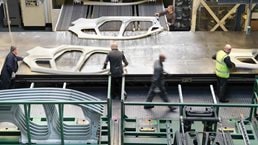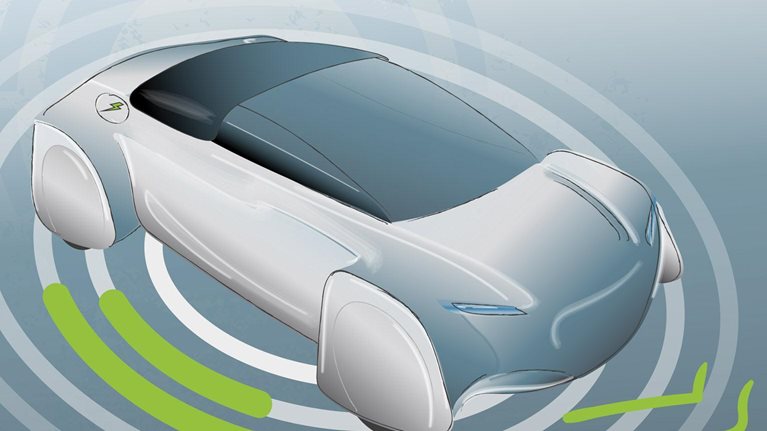After years of double-digit growth, China’s auto market is slowing down. A cooling economy is one of the primary factors in the deceleration of what remains the world’s largest market for automobiles.
But other factors such as changing consumer behavior and attitudes toward cars are also at play. To better understand what China’s auto buyers think and how they behave when making one of the biggest purchases of their lives, McKinsey conducted an extensive survey of over 3,500 consumers in March.
While the enthusiasm for cars hasn’t entirely dimmed, the survey shows that Chinese car buyers are becoming more practical and less status-conscious than ever. Nearly half of the consumers surveyed see cars as necessities rather than as status symbols. Especially for consumers in high-tier cities, purchasing a new car is now just one option among many for getting around. Alternatives like buying a used car, leasing or renting, and relying on e-hailing and car-sharing services hold increasing appeal. Consumers are also pressing dealers for lower prices on cars after using digital channels to compare offers.
Changing consumer attitudes and macroeconomic headwinds are slowing growth in China’s vehicle market. From 2010 to 2015, vehicle sales in China increased by more than 12 percent a year. Looking out to 2020, however, we project that the vehicle market will grow by an average of 5 percent a year (Exhibit 1).

While the rate of growth in the overall new-car market is decreasing, the survey highlights consumer segments that could emerge as new engines of growth in China’s auto market. More than half of consumers aspire to upgrade to a better brand when they buy their next car. A majority of electric vehicle (EV) owners is keen to buy EVs again, and the proportion of consumers who say they are interested in buying an EV has tripled since 2011. Consumers have begun purchasing cars online, a trend that is likely to accelerate as digital channels improve. And we see promising growth potential for automotive-services companies that can provide the maintenance and upgrade options that customers say they want.
Despite the slowing growth in China’s auto market, vast numbers of people are willing to buy new cars and pay for after-sales services. In this report, we describe how consumers’ attitudes toward cars are evolving, and what businesses can do to thrive in this rapidly changing market.
Weighing alternatives: Car ownership loses some appeal
Chinese consumers are far from ready to go car-free. Nearly half of the recent car buyers surveyed say cars are a necessity; almost one-third say they need to own cars. But some aspects of car ownership hold less allure than they used to. Sixty percent of consumers say cars no longer function as status symbols (Exhibit 2). (The government’s anti-corruption campaign may have played a part in discouraging consumers from buying premium cars.) A similar share of consumers, however, say their cars should reflect their attitudes and preferences. In time, this could translate into growing interest in a wider variety of car brands.

For 37 percent of the consumers surveyed, owning a car seems less important now that other forms of transport are available. Significant numbers of consumers believe they can meet their needs by renting (40 percent), leasing (34 percent), or co-owning cars (26 percent) rather than buying their own.
The expansion of e-hailing, ride-sharing, and other new mobility services is changing consumer behavior to an extent that could affect the new-car market. Another recent McKinsey survey found that digital consumers drive 20 percent less after they begin using mobility services.1 Our projections suggest that these services could reduce annual private-vehicle sales by as many as 4 million vehicles by 2030, out of an estimated 40 million annual vehicle sales (Exhibit 3). Part of that decline, however, could be offset by the additional sales of up to 2 million shared vehicles used by mobility services. We anticipate brisk sales of shared vehicles, which need to be replaced more often than private cars because of heavier use.

These trends are opening a range of possibilities for automakers. Daimler has introduced a car-sharing service, Car2Share, in Beijing, Guangzhou, Shanghai, and Shenzhen, following the success of its pilot car-sharing program for the employees of Tencent. Other automakers may choose to develop vehicle models specifically for e-hailing and other new mobility services.
Turning thrifty: Value takes priority for many buyers
As consumers reconsider the need to own cars, they are shopping for them with new priorities in mind. When McKinsey surveyed China’s premium-car consumers five years ago, they said budget was the fourth-most important factor in buying a car. In our latest survey, consumers rank budget the second-most important factor, after brand, for both new and used premium cars.
China’s car buyers have benefited as car prices have fallen 4 percent each year over the past decade because of intense competition among automakers. Despite the greater price competitiveness of new cars, used cars are becoming increasingly popular: the survey shows that almost half of consumers considered a used vehicle when they last shopped for a car (Exhibit 4). Good value makes used cars attractive: 56 percent of consumers say they consider purchasing used cars because they want to pay less, and 37 percent say they consider used cars in the hope of getting a nicer car for their money.

Some aspects of used cars do worry consumers, though. Our survey found that the two most common concerns about used cars are the validity of their registration, insurance, and inspection documents (mentioned by 56 percent of consumers) and the trustworthiness of their previous owners (46 percent); 24 percent of consumers say they do not believe dealers will fulfill the terms of the warranties they offer on used cars.
Because consumers previously expressed less interest in used cars, and because used-car sales were a low-margin business, few dealers have paid much attention to their used-car operations. Some automakers and car dealers are refocusing their attention on this growing segment, however. For example, in April 2014, Pang Da, a leading automotive dealership group in China, set up a joint venture with the automotive website Bitauto and the online used-car marketplace Youxinpai to certify used cars and sell them online. Baoxin Auto, another leading group of car dealers in China, launched Autostreets.com, an online-to-offline automotive sales platform. From this platform, Baoxin also offers financing, insurance, and reservations for maintenance and repair services.

Would you like to learn more about our Automotive & Assembly Practice?
Shopping online: Consumers want data and deals
Consumers are turning to digital media for information about cars. According to the survey, professionally run automotive websites and discussion forums like Autohome are now the most popular sources of information, used by 58 percent of respondents (Exhibit 5). More consumers are also learning about cars on social networks, other Internet communities, and automakers’ websites. Recommendations from family, friends, and colleagues are still valued by consumers (54 percent of respondents), but they are no longer the leading information source that they were in 2011.

Online research tends to make consumers think they should spend less for cars, especially at the higher end of the market. On average, the car shoppers surveyed expect a 15 percent discount on the retail price of new cars and a 20 percent discount on the price of used cars. More than 60 percent of consumers credit those expectations to online sources, which let them find discounts easily. Tougher competition among automakers in recent years has also driven prices down, which may have conditioned consumers to expect better deals.
Although car dealers face some pricing pressure from digital consumers, they also have opportunities to increase sales by using digital channels. Nearly one-third of the digital consumers surveyed said they are very willing to buy cars through online stores. Singles Day in 2014, when consumers ordered some 170,000 cars online, was a turning point in this regard. On Singles Day the next year, online car orders reached 230,000; however, a significant portion of these orders did not result in purchases.
Some automakers and car dealers are expanding their digital initiatives. In August 2015, nearly 40 dealer groups joined the Autostreets digital platform, which connects online shoppers to offline dealerships. We also see OEMs such as SAIC Volkswagen starting to sell new vehicles online and redesign the customer experience across different digital touchpoints.
Many automakers and dealers have found it difficult to stand out from their competitors online and to integrate their customers’ online and offline shopping experiences. We see a few tactics that could prove helpful, such as deploying advanced analytics to define customer microsegments more precisely, determine their preferences, and target them with customized offers. For example, Tencent recently developed in-depth profiles of SUV consumers in lower-tier cities and compared them against their counterparts in Tier 1 and 2 cities. Leveraging insights gleaned from more than 100,000 SUV consumers and potential customers, and by analyzing millions of pieces of digital behavior data and social-network patterns in Tencent’s ecosystem, they developed a prioritized short list of target commercial and residential areas and defined consumer preferences for music, games, sports, holiday travel, and social-network engagement by city tier. Using these insights, one automaker improved its marketing return on investment by over 30 percent.
Trading up: More than half of consumers want to upgrade their cars
Significant numbers of the recent car buyers in the survey say they are shopping for modest, practical vehicles. But many others say they aspire to buy a better car with their next purchase. This finding is broadly consistent with another recent McKinsey survey, which found that 55 percent of consumers are confident their household incomes will rise in the next five years.2
Recent car buyers in the survey were asked whether they expect to upgrade their cars with their next purchase. More than half of consumers say they intend to trade up: 37 percent plan to switch to a better brand, and 16 percent plan to choose a better model of the brand they own now. We expect some consumers will upgrade without spending significantly more by buying used cars instead of new cars.
We also looked at how consumers’ aspirations differ according to their current brand of car. French and Korean brands have the highest shares of owners who say they want to change to a more upscale brand, at 44 and 43 percent, respectively. The owners of German cars are the most brand-loyal: 36 percent say their next car will be a better model of the brand they have now. No other country’s brands had more than 15 percent of owners say they want to buy a better car from the same brand.
For automakers and their dealers in China, these findings suggest that strong customer relations may be more important than ever. Some customers will change brands for reasons that automakers may be unable to overcome in the near term—for example, to buy a type of car that the brand does not make. But we believe car brands can make greater efforts to maintain and even increase customer loyalty. Car brands whose current customers are likely to switch brands can understand their needs better and provide them with valuable features and services, ideally those that other companies do not offer. Automakers with loyal customers can learn more about the sources of their appeal and refine products and services that consumers are less satisfied with.

Online car sales in China may be closer than they appear
Plugging in: Electric vehicles are gaining traction with consumers
Although they account for a small fraction of sales, EVs appear to challenge the trend toward car-purchasing habits that center on price and value. McKinsey’s surveys of auto consumers in 2011 and 2016 show that interest in EVs has tripled during the past five years. The government subsidies, tax breaks, and lower operating costs associated with EVs give them solid advantages. It also helps that car owners in some Tier 1 cities can get license plates more easily for EVs than they can for cars with internal-combustion engines.
Regardless of why consumers choose to acquire EVs, those who do find that they like them. Two-thirds of the EV owners surveyed report being satisfied or very satisfied with their EVs. A large majority of EV owners say they will consider buying another EV the next time they shop for a car.
EV manufacturers should recognize that the scarcity of charging stations limits the appeal of EVs more than any other factor. Among the consumers surveyed who do not own EVs, 32 percent say the limited availability of charging stations is the top reason they have not purchased EVs (Exhibit 6). Another 16 percent said they are most concerned that charging is too slow.

While consumers generally prefer foreign car brands to Chinese car brands, our survey shows that the same preference does not extend to EVs Given the early stage of the EV market in China, it’s still a level playing field for both domestic and foreign auto brands. Companies that move quickly now stand a better chance of competing successfully as the market develops.
Following a series of mystery-shopping visits to Beijing and Shanghai car dealers, we identified several areas where dealers can improve their EV sales methods. For example, salespeople typically recommend cars with internal-combustion engines before they suggest EVs (except to shoppers who do not have license plates in cities where license plates are scarce, such as Beijing). Dealers may need to give salespeople greater incentives to sell EVs, along with proper training. We also found that few car dealers let shoppers test-drive EVs without making reservations in advance. Allowing test drives on a walk-in basis would be a relatively easy change. Finally, salespeople tend to ignore shoppers’ doubts about EVs and only talk about the vehicles’ advantages. To win over skeptical buyers, salespeople should speak to them more directly about common concerns like access to charging stations.
Thinking ahead: Consumers are becoming choosier about automotive services
Some shifts in the ways that consumers shop for cars have parallels in the way they buy maintenance and repair services, feature upgrades, and other aftermarket products and services. For example, consumers are getting more information about automotive services through digital channels, though they still trust recommendations from family and friends above other sources. Consumers intend to use online channels more often to arrange maintenance and repair services in the coming year. Value also appears to be more important. Among the consumers surveyed, 70 percent say the quality of after-sales service is a very important factor when they choose a car to buy.
When it comes to sourcing automotive services, our survey found that 89 percent of consumers are open to using providers other than authorized car dealers (also known as 4S stores, for sales, spare parts, service, and survey). But consumers’ abilities to make choices in this regard may be limited. Respondents to our survey say insurers had a significant influence on the selection of a service provider for 73 percent of car repairs and dictated that selection for 15 percent of repairs.
Our survey shows that car owners are interested in automotive services beyond basic repairs and maintenance. Among the car buyers surveyed, the maintenance service that interests them the most is advice on how to drive safely and prevent excessive vehicle wear and tear in difficult conditions, such as bad weather (Exhibit 7). As for other services, discounted car insurance, sold with cars, is most popular with our survey respondents. Respondents are also interested in roadside assistance and in car insurance that comes with time-saving benefits, such as help with accident claims and auto repairs.

Amid changes in consumer preferences, authorized dealers need to cope with challenges from lower-priced independent stores. One approach that might help authorized dealers is providing comprehensive information about prices and repairs while clearly explaining the benefits of their services. As consumers use digital channels to research service providers, they may avoid businesses they cannot compare with others.
Although China’s new-car market is likely to grow more slowly through 2020, it holds considerable promise for automakers, car dealers, and service providers. Fewer consumers see new cars as necessities, let alone status symbols. But all consumers require some form of mobility, which means demand for used cars and shared vehicles will likely grow. Consumers will continue to shop for new vehicles, particularly in certain city clusters, and many will seek out better automotive services. For automakers, car dealers, and service providers, meeting these changing needs will be the key to success in a country populated by increasingly practical car owners.


